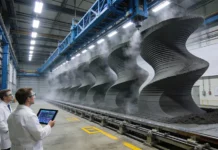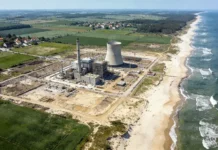It goes without saying that for decades, power systems engineers have depended heavily when it comes to modeling as well as simulation in order to make sure of an efficient as well as dependable power generation along with distribution. Electromagnetic field evaluation goes on to help them to design grid infrastructure components. Structural as well as acoustic simulation happens to be used in order to lessen a range of issues such as transformer vibration along with noise, as well as electric breakdown, and even corona discharge analysis which gets used in order to precisely anticipate the performance along with the safety when it comes to high-voltage transmission line systems.
All thanks to the built-in simulation software capacities, which help engineers in order to come up with custom models that are based on applications for users without any kind of modeling expertise, the scope when it comes to who can go ahead and actually access advanced simulation technology within power systems organizations has gone on to increase in a very dramatic way. By way of building as well as distributing their own simulation applications, power grid companies are now able to go beyond the benefits when it comes to simulation-based decision-making to more partners within the research and development workflow and even to colleagues in the field. What goes on to follow is a very effective partnership along with a rapidly accelerating spectrum of innovation.
Simulation goes on to support efficient transformer design
For instance, just take a company that goes on to develop power transformer equipment. It is well to be noted that transformers are inherently very noisy, but they can be designed in such a way so as to be as silent as possible. As it happens with most of the things when we talk of the real world, transformers happen to involve many interconnected physics, such as acoustics, electromagnetics, as well as structural mechanics, in such a case, which means that the multiphysics solutions software happens to be the tool for the job when it comes to making utmost use of their designs.
The research and development engineers, who happen to be responsible for coming up with the new transformer designs, all are well in know as to how to make use of the finite element analysis—FEA software. However, they also worked closely along with other teams as well as departments that had no such expertise.
For instance, the designers who were tasked with building the final Transformers happened to have no familiarity with FEA. Rather, they preferred making use of spreadsheets as well as other tools that are based on statistics as well as empirical models, which worked well for transformers that they built on a regular basis, but not for those designs or scenarios where varied dimensions happened to be introduced.
In such more intricate cases, multiphysics simulation was completely necessary in order to get precise predictions of how noisy the final transformers could be. Moreover, if the final designs were very noisy, the company would have to make certain more expensive modifications. They needed to have a better approach.
So what did they do? They came up with their own custom simulation application, which was based on the finite element models. That way the design team could go ahead and enter parameters into the input fields with a much more straightforward user interface that was built by the engineers in-house, personalized to suit the needs of the company. Since the applications happen to be powered by their own underlying multiphysics model, the designers could then very quickly and precisely evaluate how their transformers would sound due to the result of varied combinations in terms of geometry, design parameters, and material.
Bringing in the solution to the field so as to get efficient grid maintenance
Even due to proper design optimization done by equipment manufacturers, the power grid still requires to be tracked as well as maintained in order to prevent and also resolve any sort of outages as well as other issues. In the event of failure of a cable, for instance, field technicians get tasked with troubleshooting as well as pinpointing the reason. There happen to be a lot of factors at work, like the environment in which the cable is located, impurities that are present in the cable, cable structure along with the material that is used in it, voltage fluctuations, if any, and even operating conditions. The structure is especially very intricate and comprises multiple layers and also a wire core of mutually insulated wires that are stranded.
In order to get a detailed understanding when it comes to cable failures, which involves being able to evaluate the inside of the cables, and making use of simulation software, it is not practical or even realistic to send a simulation engineer every time out with the technician, nor is it realistic to teach the technicians making use of simulation software. However, it is possible to have a simulation engineer get a custom application built when it comes to helping the troubleshooting personnel to make use of it in the field. Apparently, a simulation application would go ahead and enable them to evaluate cable failures based upon both physics as well as their local on-site scenario in order to ultimately resolve any sort of issue and that too in real time thereby saving a lot of effort as well. This is not a fictional instance – a power grid company went on to roll out an application for precisely this usage many years back. By way of putting the power of simulations within the hands of those who actually needed it, and when they needed it, utility companies can streamline their research and development and also keep the power systems running in a very smooth way.



































